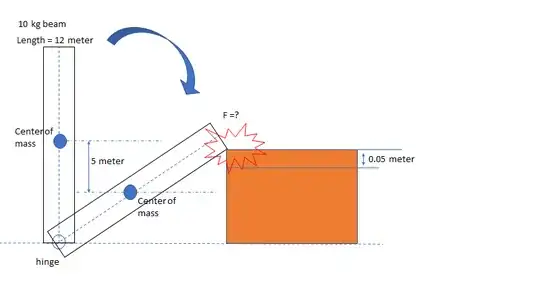A beam of 10 Kg and length 12 meter starts to fall from initial vertical position with one end hinged.
When Beam's center of mass is dropped 5 meter from earlier position, Beam hits an object with its far end.
The object compresses by 0.05 meter.
To calculate impact force, I have taken full mass into account. So Impact Force X displacement 0.05 meter = mass 10 Kg X g 9.81 X h 5 meter Impact Force = 9810 N
I have two questions about my method
If Beam weight is 10 Kg on weighing scale; Does it mean mass m is 10 Kg or weight mg is 10 kg? if mg is 10 then force will be only 981 N. ( sorry for the dumb question)
As we see only head of beam makes an impact with the object. So should I consider full mass for impact force calculation? Or a factor of it?
Will it make any difference if instead of beam, a flat disk of same height and weight is falling? All condition remaining same.
Please help me. Basically I have to make sure that the object being hit is safe.
